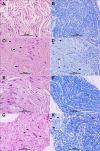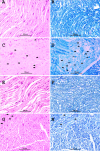The effect of curcumin on oxaliplatin and cisplatin neurotoxicity in rats: some behavioral, biochemical, and histopathological studies
- PMID: 22648527
- PMCID: PMC3576489
- DOI: 10.1007/s13181-012-0239-x
The effect of curcumin on oxaliplatin and cisplatin neurotoxicity in rats: some behavioral, biochemical, and histopathological studies
Abstract
Cisplatin is commonly used against several solid tumors, and oxaliplatin is an effective cytotoxic drug used in colorectal cancer. A major clinical issue affecting 10-40 % of patients treated with cisplatin or oxaliplatin is severe peripheral neuropathy causing sensory, motor, and autonomic dysfunction, with symptoms including cold sensitivity and neuropathic pain. The biochemical basis of the neurotoxicity is uncertain, but is associated with oxidative stress. Curcumin (a natural phenolic yellow pigment) has strong antioxidant, anticancer, and anti-inflammatory actions. Here we report the possible protective effect of curcumin on some cisplatin- and oxaliplatin-induced behavioral, biochemical, and histopathological alterations in rats. Twenty-four hours after the end of treatments some motor and behavioral tests (motor activity, thermal and mechanical nociception, and neuromuscular coordination) were conducted, followed by measuring plasma neurotensin platinum concentration in the sciatic nerve, and studying the histopathology of the sciatic nerve. Oxaliplatin (4 mg/kg) and cisplatin (2 mg/kg) [each given twice weekly, in a total of nine intraperitoneal injections over 4.5 weeks] significantly increased plasma neurotensin concentration, caused specific damage in the histology of the sciatic nerve and produced variable effects in the motor and behavioral tests. Oral curcumin (10 mg/kg, 4 days before the platinum drug, and thereafter, concomitantly with it for 4.5 weeks) reversed the alterations in the plasma neurotensin and sciatic nerve platinum concentrations, and markedly improved sciatic nerve histology in the platinum-treated rats. Larger experiments using a wider dose range of oxaliplatin, cisplatin, and curcumin are required to fully elucidate the possible protective role of curcumin in platinum-induced neurotoxicity.
Figures



References
Publication types
MeSH terms
Substances
LinkOut - more resources
Full Text Sources
Other Literature Sources
Medical

